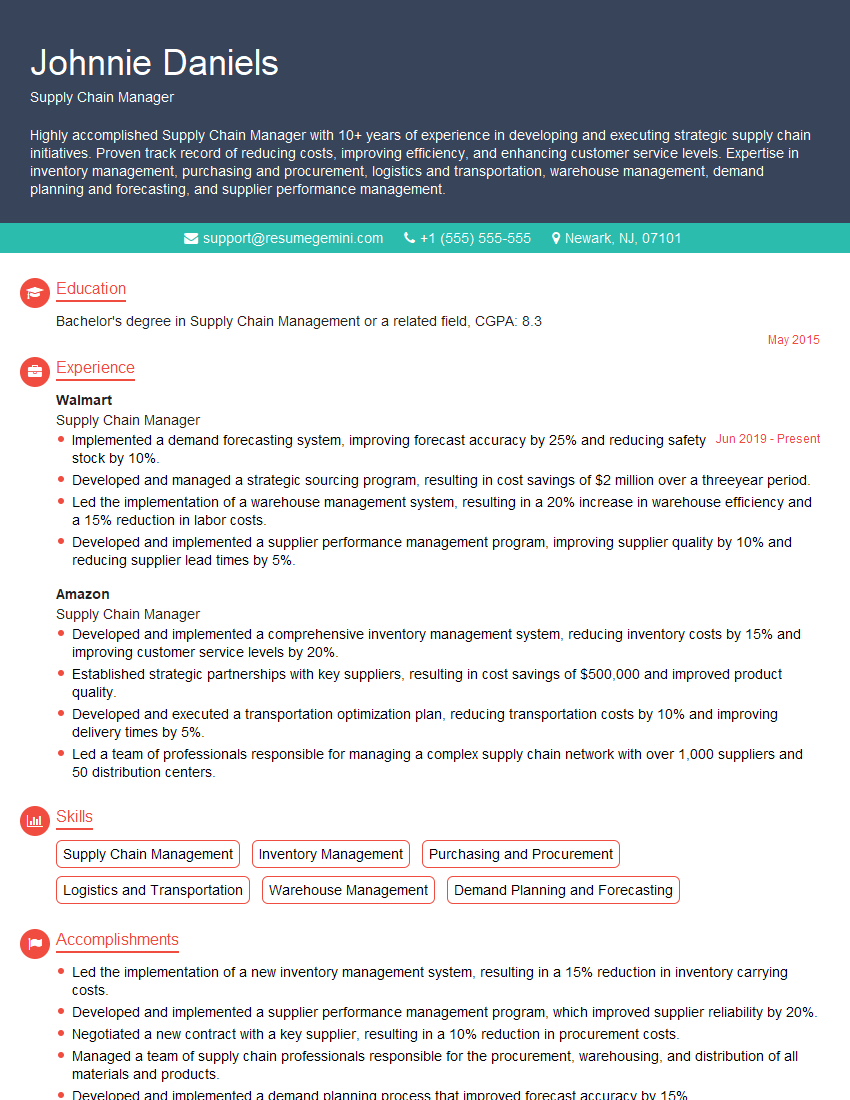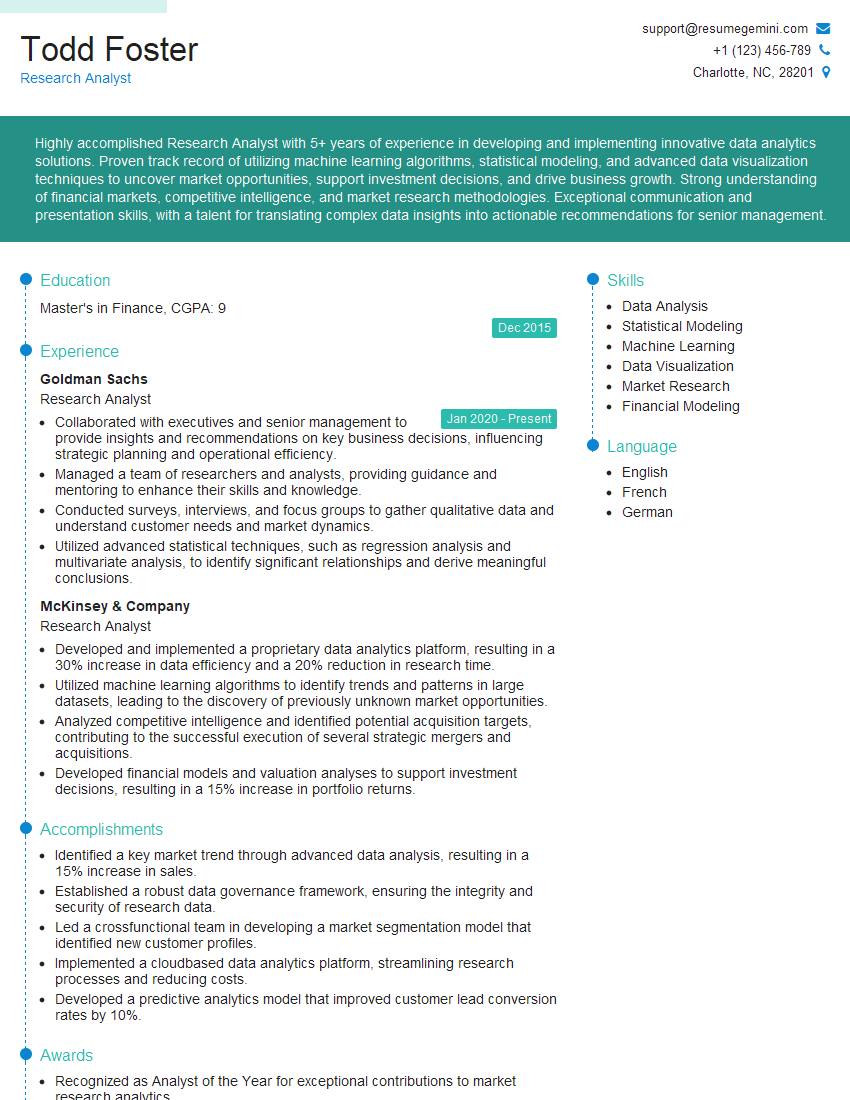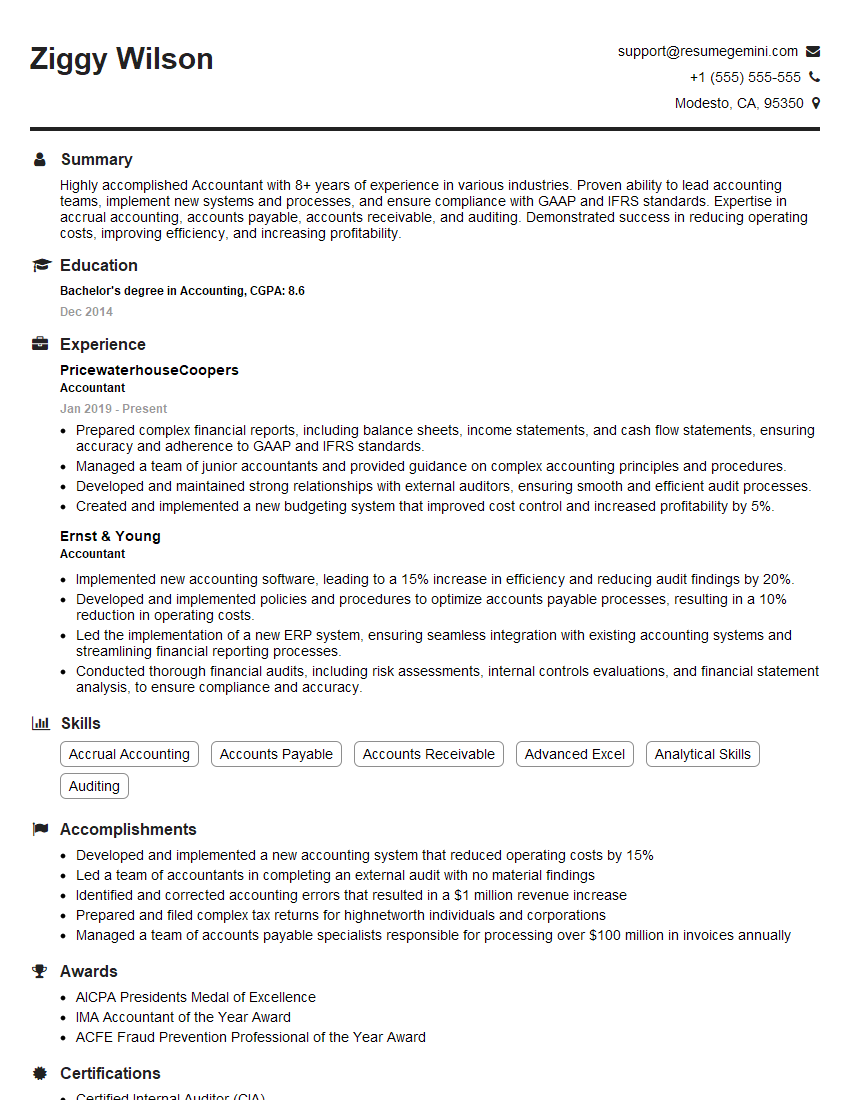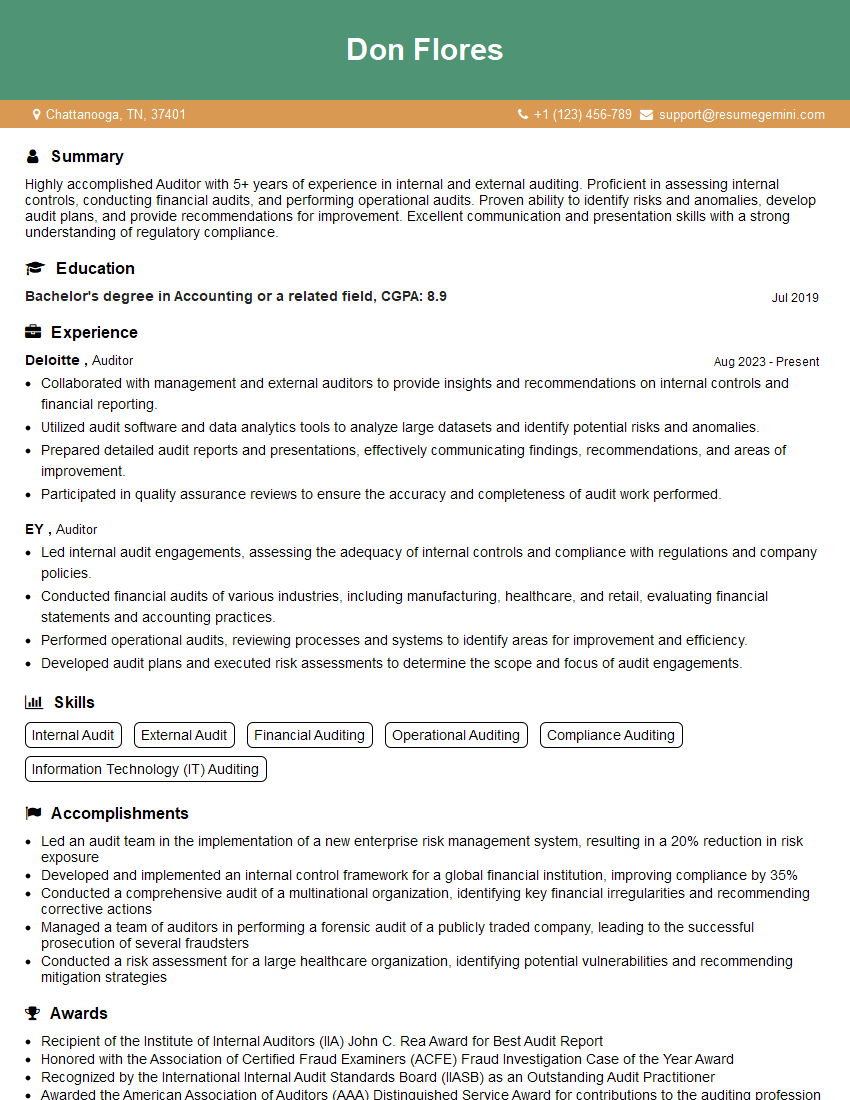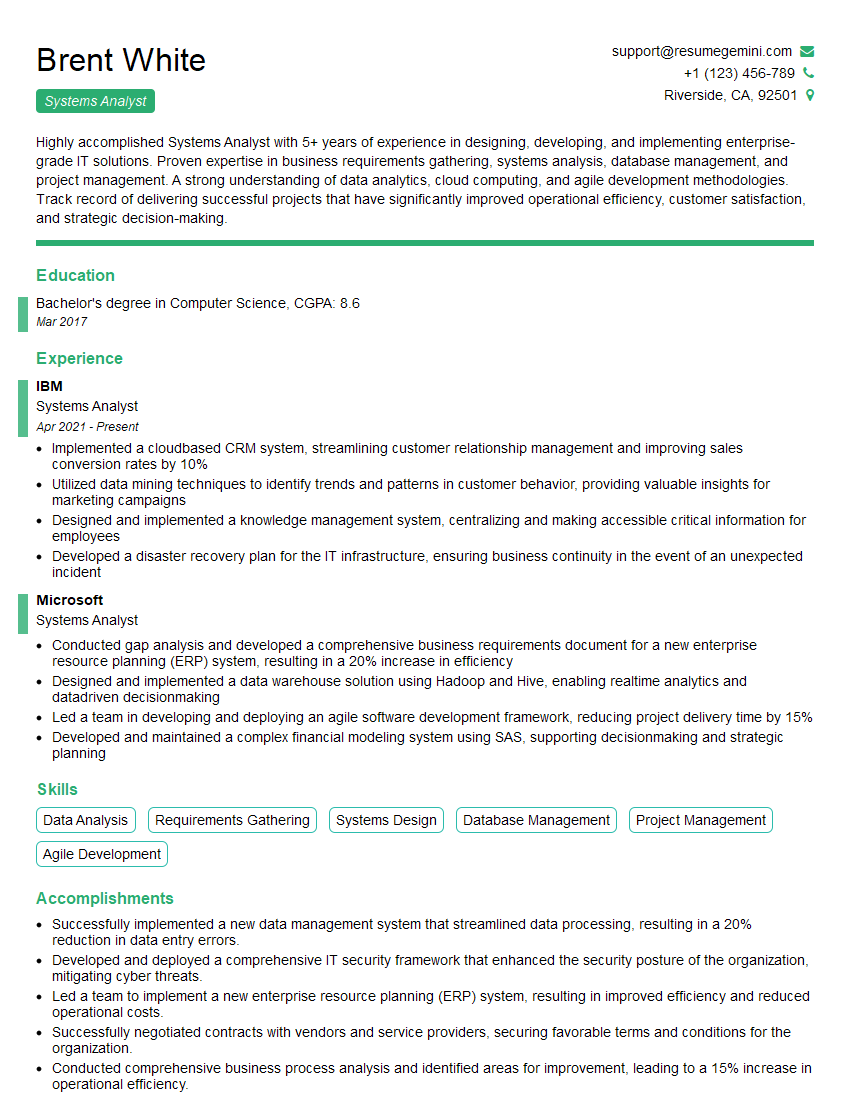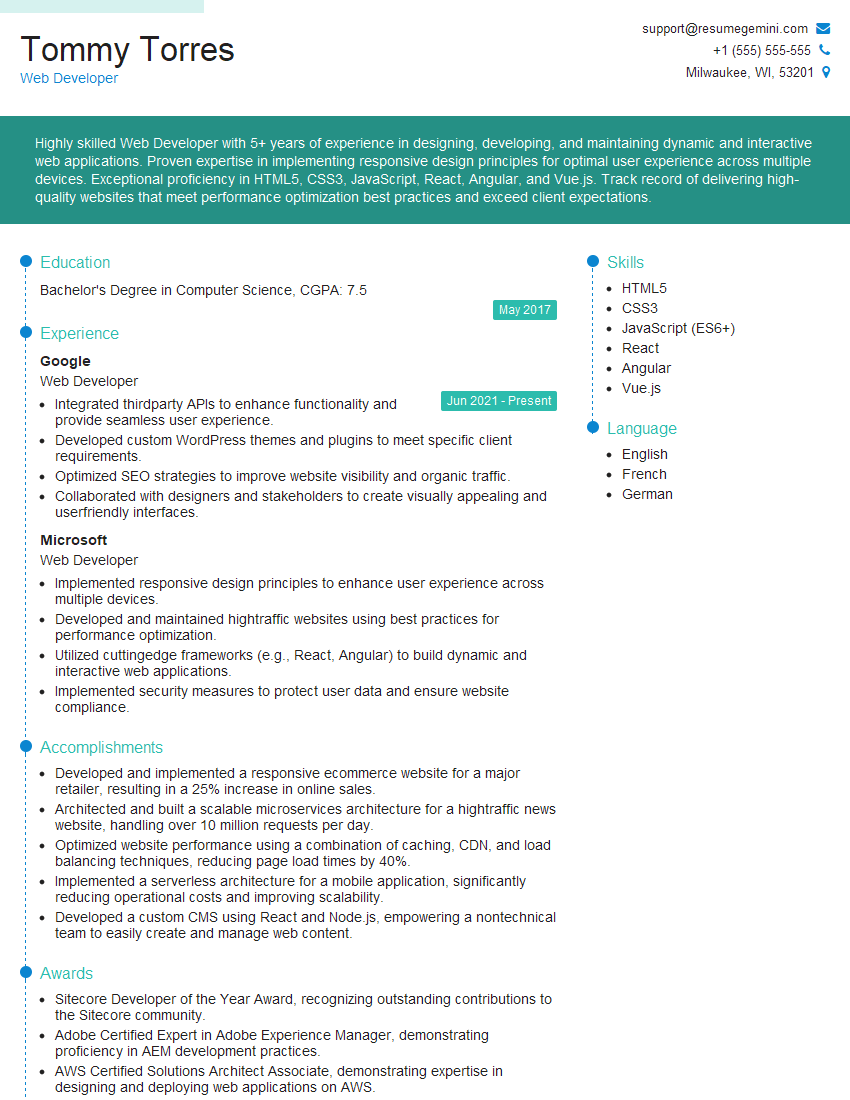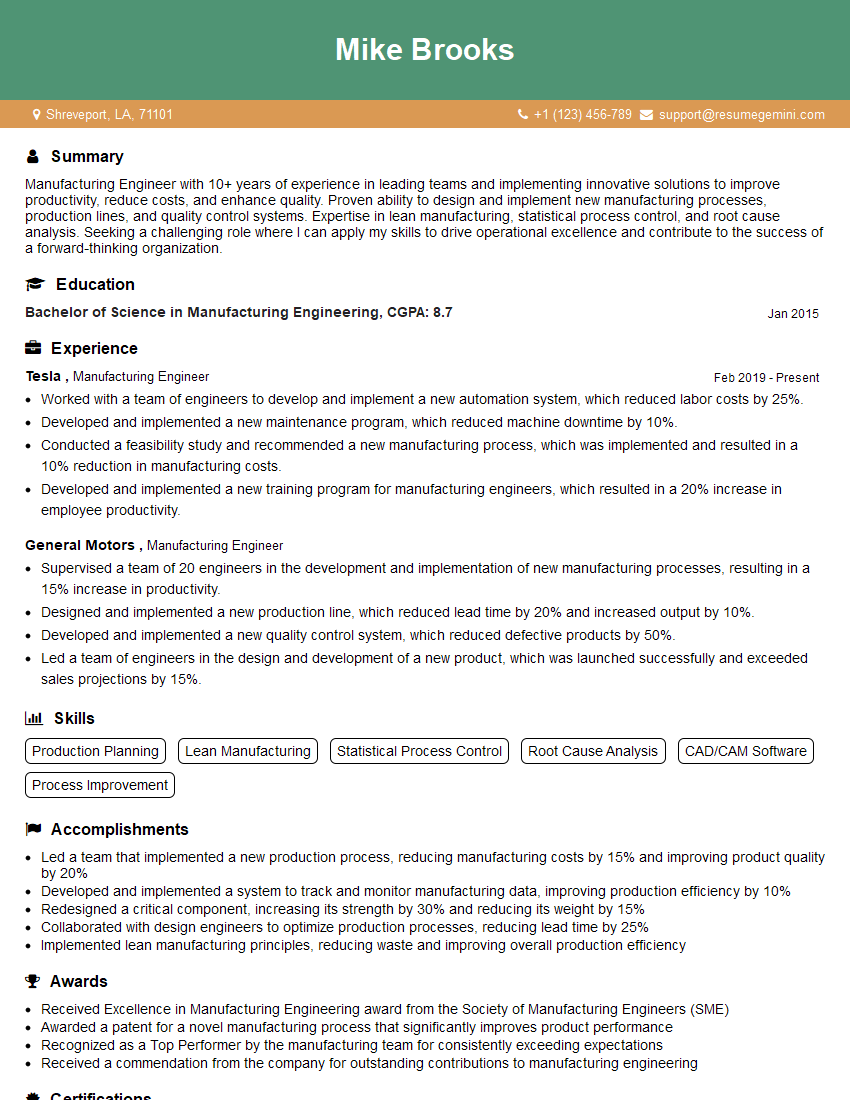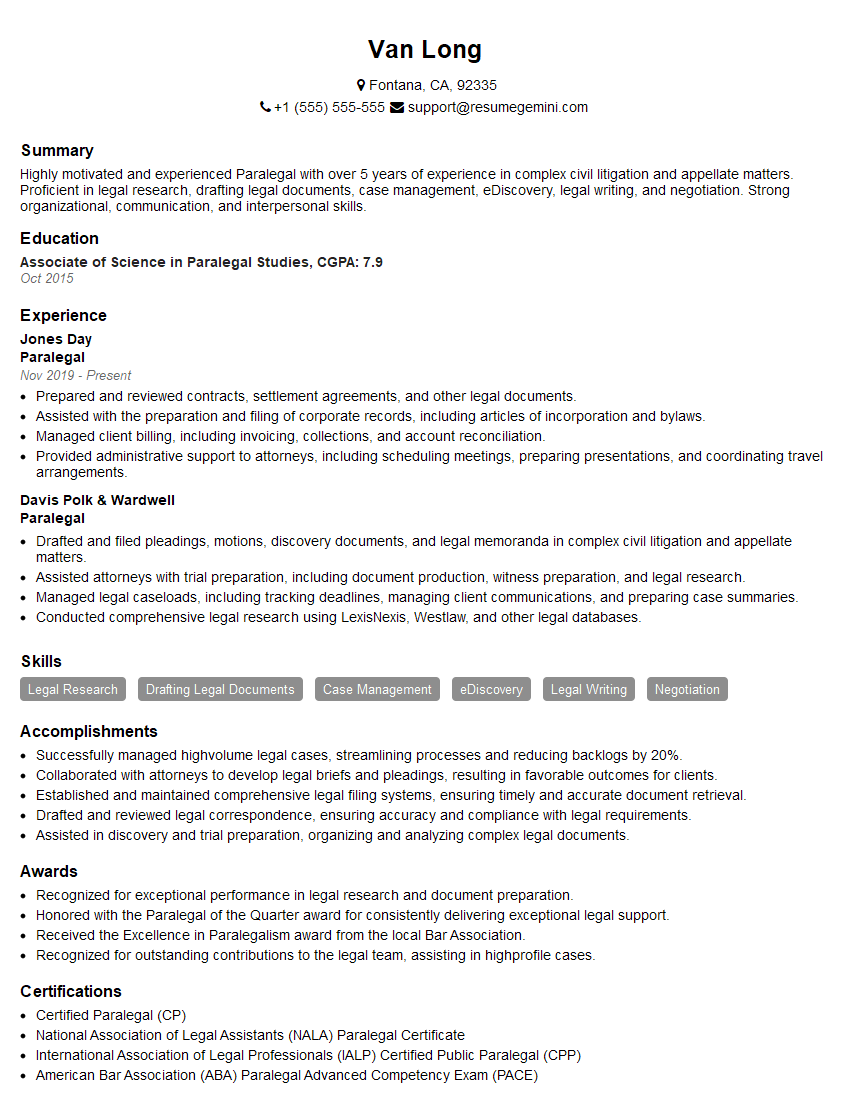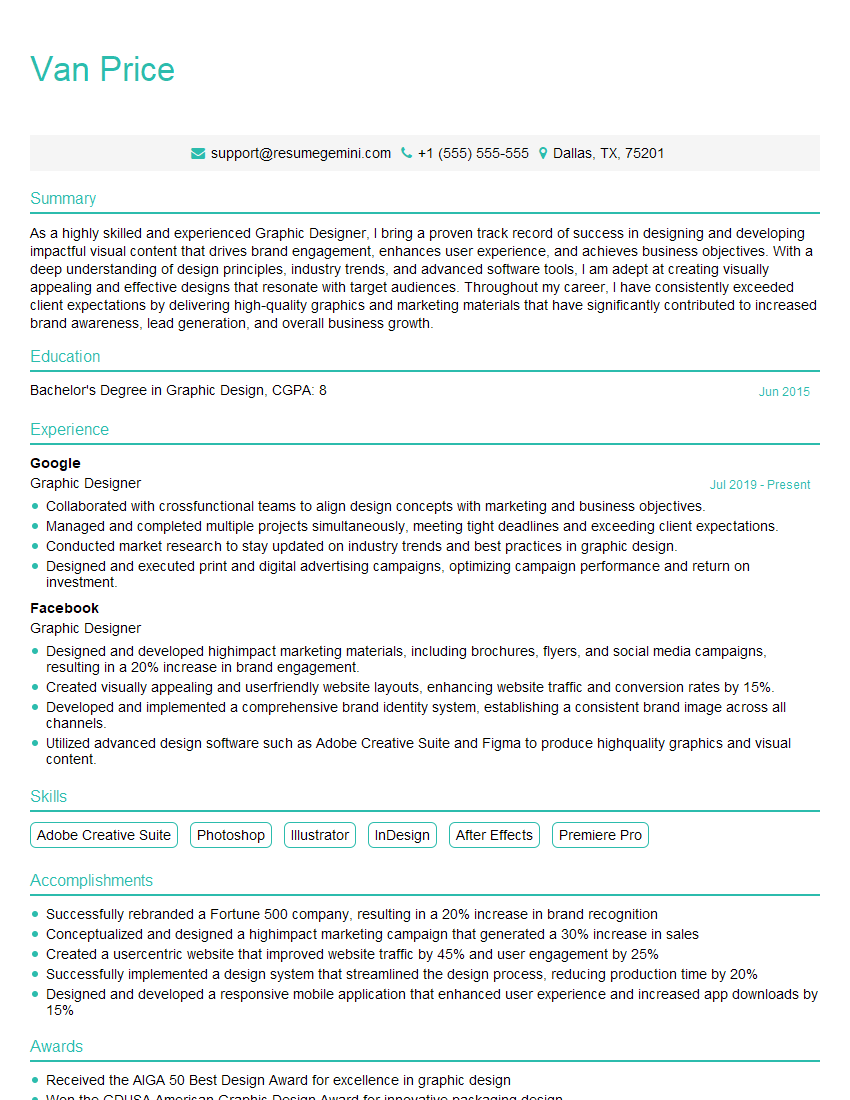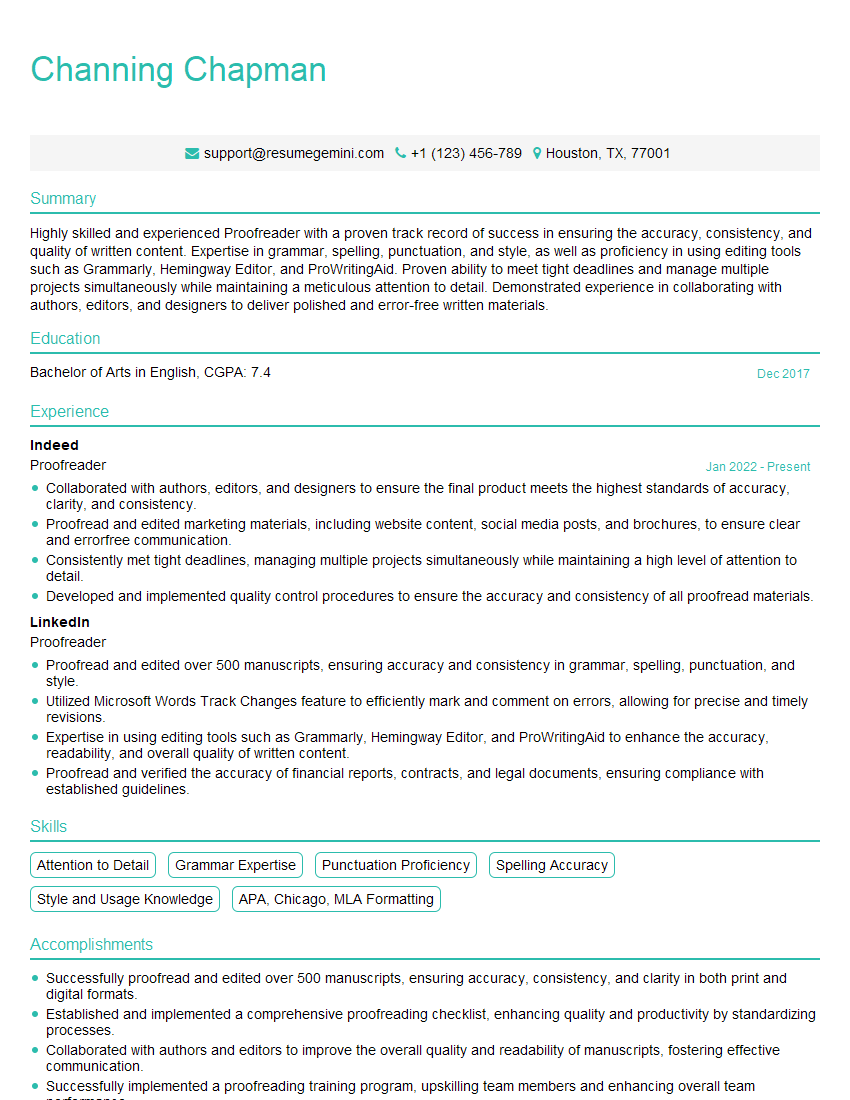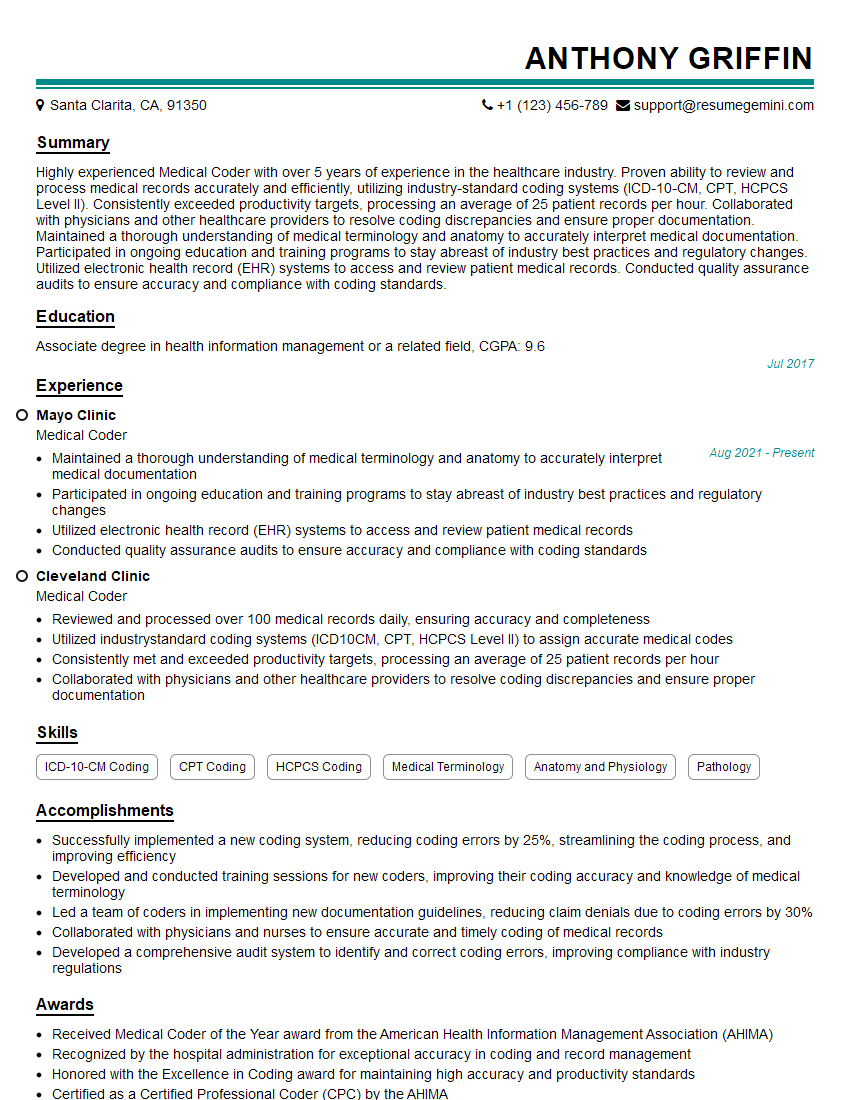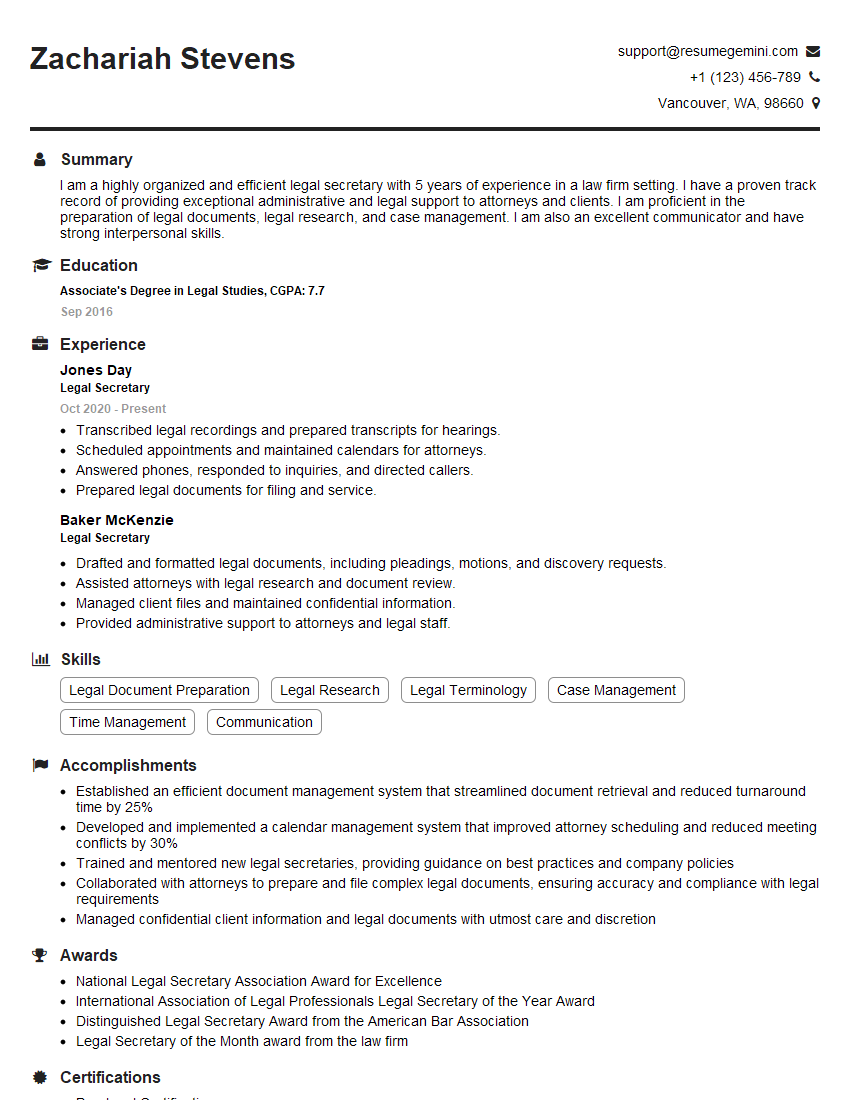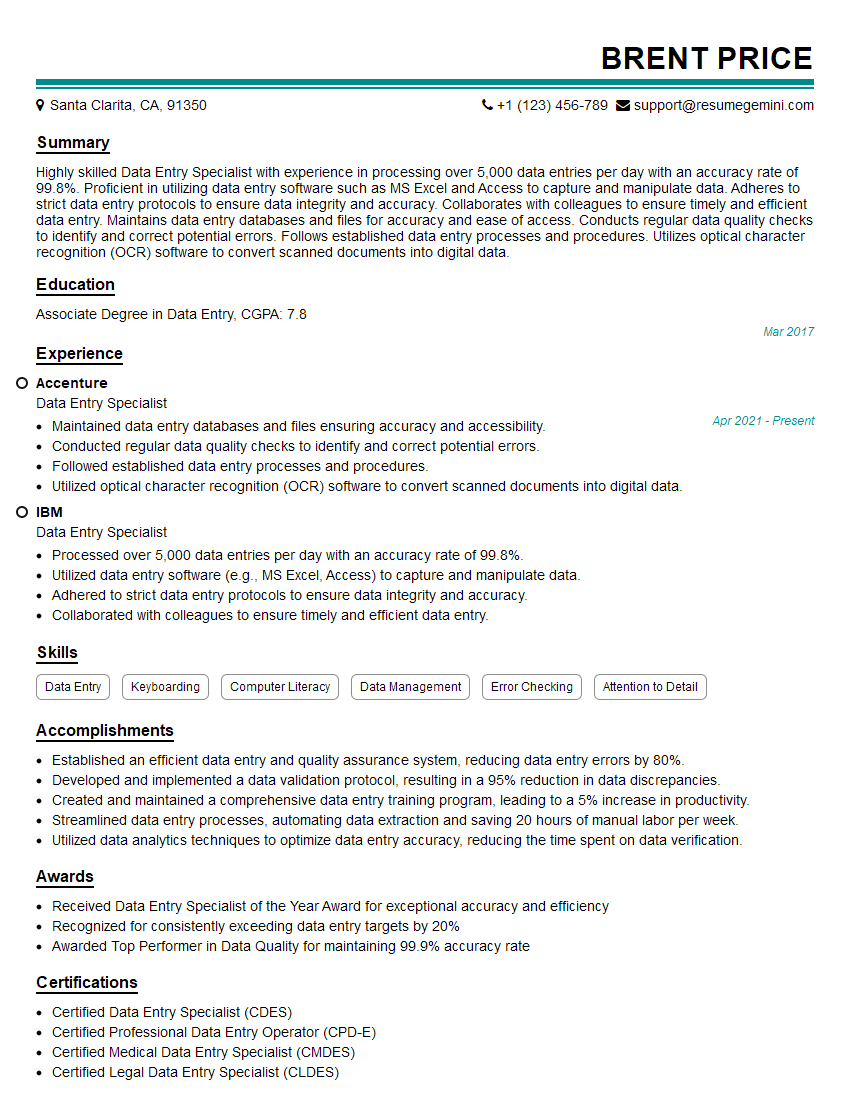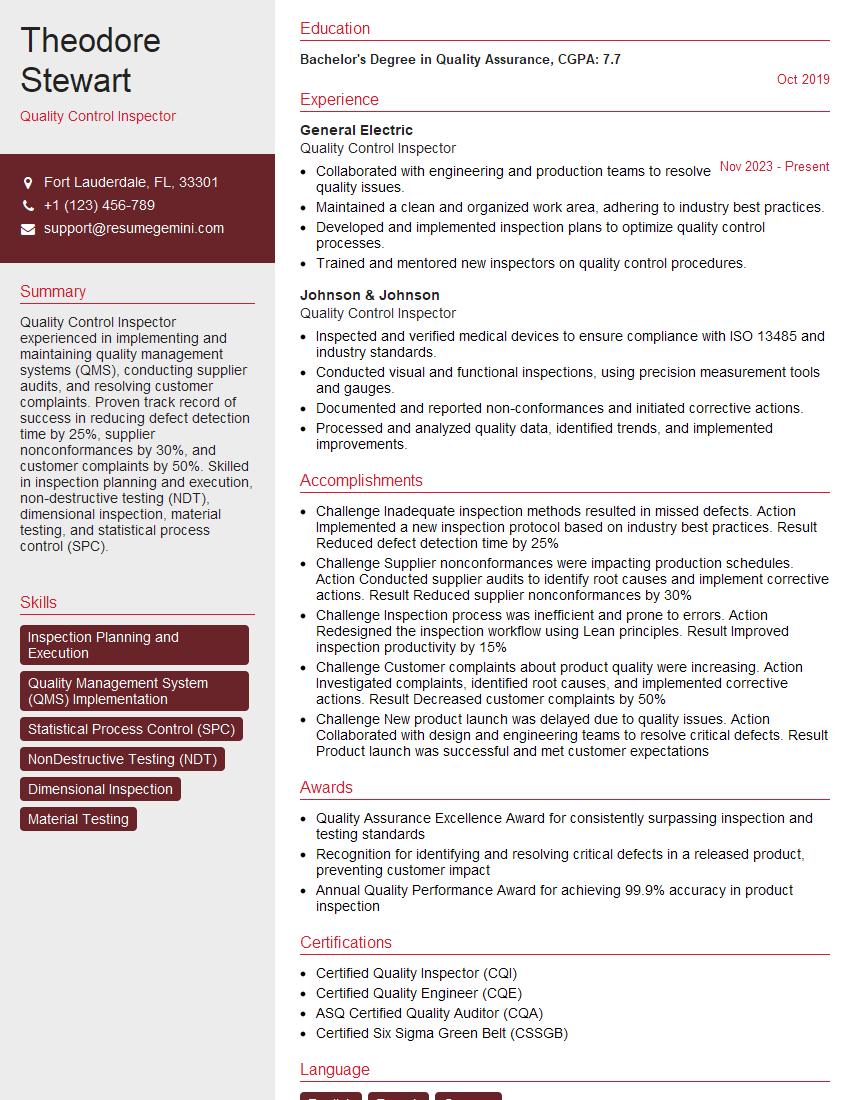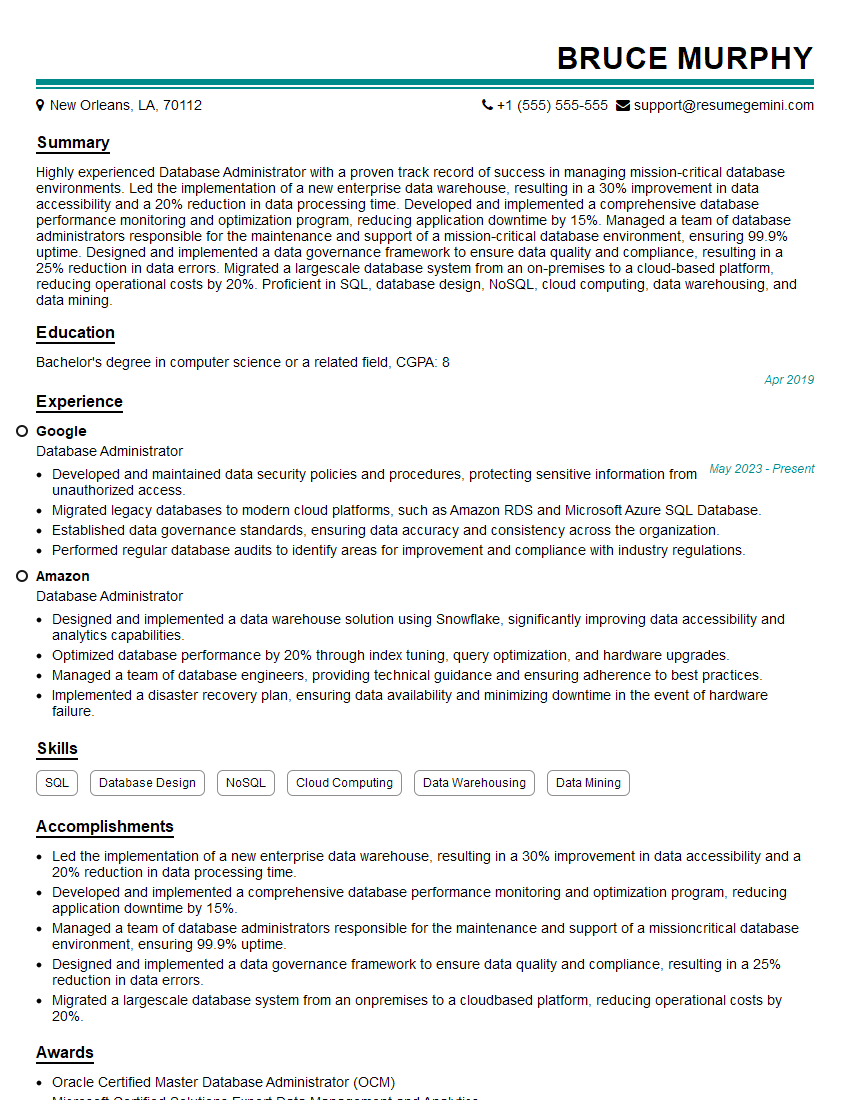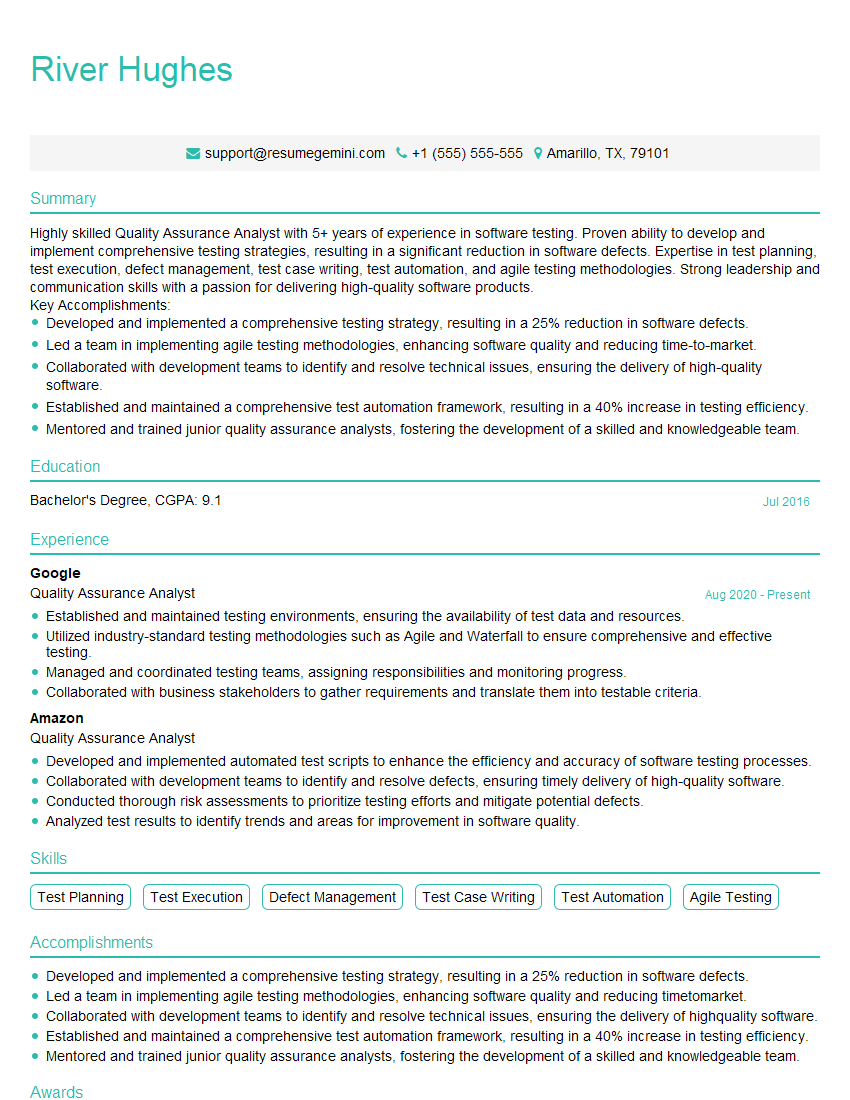Unlock your full potential by mastering the most common Strong attention to detail and commitment to quality interview questions. This blog offers a deep dive into the critical topics, ensuring you’re not only prepared to answer but to excel. With these insights, you’ll approach your interview with clarity and confidence.
Questions Asked in Strong attention to detail and commitment to quality Interview
Q 1. Describe a time you noticed a crucial detail others missed. What was the outcome?
During a critical software release review, I noticed a seemingly minor discrepancy in the date format used for a crucial user data field. While others focused on the core functionality, I recognized this inconsistency could lead to data parsing errors and potential compliance issues. The date format in one module used MM/DD/YYYY, while another used DD/MM/YYYY. This seemingly small detail could have caused significant problems downstream, leading to inaccurate reports and even legal repercussions if it involved sensitive information. I brought this to the team’s attention, halting the release process temporarily. The outcome was a complete audit of the date formats across the entire application, resulting in a consistent, globally recognized ISO 8601 format (YYYY-MM-DD) being implemented. This prevented potential data errors, assured compliance, and boosted the overall quality and reliability of the software.
Q 2. How do you ensure accuracy in your work, especially under pressure?
Ensuring accuracy under pressure requires a multi-pronged approach. First, I meticulously plan my workflow, breaking down complex tasks into smaller, manageable steps. This helps maintain focus and reduces the likelihood of errors. Second, I utilize checklists and templates whenever possible to standardize procedures and minimize the risk of omissions. Third, I employ techniques like double-checking my work, using automated tools where available (like spell-checkers or data validation scripts), and seeking peer reviews – especially for critical sections. Finally, I prioritize sufficient time allocation for each task, avoiding rushing, which is a common source of errors under pressure. For example, if I’m processing a large dataset, I’ll break it into smaller batches, verifying the accuracy of each batch before proceeding. This methodical approach reduces the risk of cascading errors and allows for timely correction of any inaccuracies.
Q 3. Explain your process for reviewing your own work for errors.
My self-review process is structured in stages. First, I take a break from my work to gain fresh perspective. Then, I review my work using a checklist tailored to the specific task, checking for adherence to specifications, consistency in formatting and style, and logical flow. Next, I conduct a detailed line-by-line review, paying particular attention to areas prone to errors – calculations, data entry, and code logic. After that, I employ a reverse-check, starting from the final output and working backward to verify the steps leading to it. Finally, I test my work extensively, simulating real-world usage scenarios to identify any unexpected behavior. This multi-layered approach ensures a thorough self-evaluation, significantly improving the quality of my final output.
Q 4. How do you handle conflicting priorities when maintaining high quality is paramount?
Prioritizing tasks when quality is paramount requires a clear understanding of the impact and dependencies of each task. I use a prioritization matrix, considering urgency and importance. High-impact, high-urgency tasks, crucial for maintaining quality, always take precedence. I communicate effectively with stakeholders to negotiate deadlines or scope, explaining the potential consequences of compromising quality. For instance, if a low-priority task threatens to delay a high-priority, quality-critical task, I will clearly explain the trade-offs and propose solutions, such as delegating or postponing the lower priority item. Sometimes, it involves breaking down larger tasks into smaller, more manageable parts to fit them within the given constraints, ensuring quality at each step.
Q 5. Describe a situation where you had to identify and correct a significant error.
During a project involving the migration of data to a new system, I discovered a significant error in the data transformation script. The script inadvertently dropped several crucial data points from a subset of records, potentially compromising the integrity of the final dataset. This error was not immediately apparent in the initial test runs due to the limited scope of the test data. I identified the error by carefully comparing the source data with the transformed data using a line-by-line comparison tool. Once pinpointed, I corrected the script, implemented thorough unit tests to prevent such errors in the future, and performed a full data reconciliation to confirm the accuracy of the corrected data. We learned that more rigorous testing with a more representative sample dataset would have caught the issue earlier.
Q 6. How do you stay organized when managing multiple tasks requiring high attention to detail?
Staying organized when managing multiple detail-oriented tasks involves a combination of strategies. I use a project management tool to track all my tasks, breaking them down into subtasks and assigning deadlines. I prioritize tasks based on their urgency and importance, using methods like Eisenhower Matrix (urgent/important). I leverage color-coding, tagging, and labels to categorize tasks and easily filter through my work. Regularly reviewing my schedule and adjusting priorities as needed helps maintain control. For example, I might dedicate specific time blocks for focused work on tasks requiring intense concentration, minimizing interruptions. This structured approach ensures I stay on top of all my tasks without compromising attention to detail.
Q 7. What methods do you use to prioritize tasks to ensure quality and timely completion?
Prioritizing tasks to ensure both quality and timely completion is crucial. I use a combination of techniques. The MoSCoW method (Must have, Should have, Could have, Won’t have) helps categorize tasks based on their relative importance. I then utilize a prioritization matrix, plotting tasks on a grid based on urgency (x-axis) and importance (y-axis). This visual representation helps quickly identify which tasks demand immediate attention. I also consider dependencies between tasks, ensuring that critical path tasks are prioritized to avoid bottlenecks. Finally, I regularly review and adjust my priorities as new information emerges or circumstances change, ensuring I always focus my effort on the most impactful tasks while maintaining an unwavering commitment to quality.
Q 8. How do you handle feedback on your work, especially if it highlights a missed detail?
Feedback is invaluable; it’s a chance to learn and improve. When feedback highlights a missed detail, I approach it systematically. First, I thank the person for pointing out the oversight; acknowledging their contribution fosters a positive work environment. Then, I carefully review the feedback, precisely locating the issue. I analyze *why* the detail was missed – was it a process breakdown, a misunderstanding of requirements, or simply an oversight? Understanding the root cause prevents future recurrence. Once I understand the problem, I implement a correction, meticulously documenting the change and testing to ensure the fix is effective and doesn’t introduce new issues. Finally, I reflect on the process to refine my workflow and minimize similar errors in the future. For example, if I missed a specific formatting requirement, I’d add that detail to my personal checklist or template for future projects.
Q 9. Describe your experience using quality control checklists or similar tools.
I’ve extensively used quality control checklists throughout my career, particularly in projects requiring high precision and accuracy. These checklists aren’t just static documents; I tailor them to the specific project, adding or removing items based on the complexity and requirements. For instance, when working on a technical document, my checklist might include items such as ‘Verify all code snippets compile correctly,’ ‘Check all cross-references,’ and ‘Ensure consistent formatting.’ When working with data, my checklist would shift focus to data validation, ensuring consistent units, and checking for outliers or anomalies. The key is proactive and consistent usage. I typically review the checklist before, during, and after the completion of each task to ensure I’ve covered all aspects. Using checklists minimizes human error, allowing me to focus on the intricacies of the task, while providing a systematic, reproducible approach to quality control.
Q 10. How do you ensure consistency in your work product?
Consistency is paramount. I achieve this through a combination of standardized processes, templates, and style guides. Before embarking on a project, I create or review a style guide outlining formatting, terminology, and any specific requirements. For example, I’ll define how dates are formatted (MM/DD/YYYY vs. DD/MM/YYYY), what units of measurement are used, and a specific naming convention for files. I leverage templates for frequently used documents or tasks, ensuring a consistent base for each project. This allows me to focus on the unique content rather than repeatedly making formatting decisions. I also regularly review my work against the style guide and templates throughout the process as another layer of quality control to catch inconsistencies early. Think of it like baking a cake; using a standardized recipe (style guide & template) ensures consistent results every time.
Q 11. What strategies do you use to prevent errors from occurring in the first place?
Preventing errors is more efficient than correcting them. I employ several strategies. Firstly, I meticulously review project requirements, asking clarifying questions to ensure complete understanding. Second, I break down complex tasks into smaller, manageable sub-tasks, making error identification easier. Third, I utilize tools like spell checkers, grammar checkers, and automated data validation techniques wherever applicable. Fourth, I practice regular self-checks throughout the process, using my checklists as a guide. Fifth, and importantly, I incorporate peer reviews, encouraging colleagues to review my work and offer insights from a fresh perspective. Finally, I embrace a mindset of continuous improvement, learning from past mistakes and adapting my processes to minimize future errors. It’s about proactive vigilance and building robust processes to ensure quality from the outset.
Q 12. Give an example of a time you had to meticulously track data. How did you maintain accuracy?
In a previous role, I was responsible for meticulously tracking clinical trial data. Maintaining accuracy was critical. I used a combination of strategies. First, I employed a dedicated spreadsheet software with robust data validation features, enforcing specific data types and ranges. For example, I created dropdown menus for categorical variables and set data validation rules to prevent illogical entries. Second, I regularly performed data audits, comparing the entered data against source documents. Third, I used checksums and other data integrity checks to identify potential data corruption. Finally, I documented every step of the data processing meticulously; creating a clear audit trail that could be used for verification. This multifaceted approach ensured the highest level of accuracy and accountability. It’s like building a sturdy foundation for a building – each layer needs to be precise and verified to ensure the overall integrity of the structure.
Q 13. How do you adapt your approach to detail-oriented tasks based on the project’s complexity?
My approach to detail-oriented tasks adapts based on project complexity. Simple projects may require a less formal checklist, while complex projects warrant more detailed documentation, structured reviews, and potentially more frequent quality checks. For instance, a straightforward report might require only a basic style guide and one final review. In contrast, a complex software development project would involve rigorous unit testing, code reviews, and multiple stages of quality assurance with comprehensive checklists at each stage. The key is to allocate resources appropriately; the level of detail should be proportionate to the project’s risks and potential consequences of errors. It’s about being efficient and effective, focusing on what matters most.
Q 14. How do you utilize technology to improve accuracy and efficiency in your work?
Technology plays a crucial role in enhancing accuracy and efficiency. I utilize various tools for data management, such as spreadsheet software with advanced features like data validation and pivot tables. I employ version control systems like Git to track changes and collaborate effectively. For writing, grammar and spell-checkers are essential, but I also utilize style guides integrated into word processing software. Automation tools streamline repetitive tasks, reducing manual effort and minimizing the chance of human error. Using project management software helps keep tasks organized and deadlines clear. This technology-assisted approach ensures speed, precision, and collaborative efficiency. It is similar to a chef using modern kitchen appliances to aid in creating quality dishes more efficiently.
Q 15. Describe your process for verifying the accuracy of information from multiple sources.
Verifying information from multiple sources requires a systematic approach to ensure accuracy. My process begins with identifying the credibility of each source. I assess factors like the author’s expertise, potential biases, publication date, and the overall reputation of the source. For example, a peer-reviewed scientific journal article carries more weight than an anonymous blog post.
Next, I compare and contrast information across sources, looking for consistent themes and discrepancies. If conflicting information arises, I delve deeper to understand the reasons for the differences. This may involve researching further, consulting additional sources, or cross-referencing information against established facts or data.
Finally, I document my findings, clearly indicating the sources used and highlighting any discrepancies and my rationale for choosing a particular interpretation. This meticulous record-keeping allows for transparency and enables others to easily review my verification process.
For instance, if I’m researching the effectiveness of a particular medical treatment, I wouldn’t rely on a single website or article. I would consult multiple peer-reviewed studies, official health organization reports, and possibly even expert interviews to construct a comprehensive and accurate understanding of the subject.
Career Expert Tips:
- Ace those interviews! Prepare effectively by reviewing the Top 50 Most Common Interview Questions on ResumeGemini.
- Navigate your job search with confidence! Explore a wide range of Career Tips on ResumeGemini. Learn about common challenges and recommendations to overcome them.
- Craft the perfect resume! Master the Art of Resume Writing with ResumeGemini’s guide. Showcase your unique qualifications and achievements effectively.
- Don’t miss out on holiday savings! Build your dream resume with ResumeGemini’s ATS optimized templates.
Q 16. How do you manage your time effectively to meet deadlines without sacrificing quality?
Effective time management is crucial for delivering high-quality work within deadlines. My approach centers around meticulous planning and prioritization. I start by breaking down large tasks into smaller, more manageable sub-tasks. This allows for better tracking of progress and facilitates a more focused work approach.
I utilize tools like project management software to schedule tasks, set deadlines for each sub-task, and track my progress. Prioritization is key; I focus on the most critical tasks first, using methods like the Eisenhower Matrix (urgent/important) to allocate my time efficiently. Regularly reviewing my schedule and adapting it as needed is also important to accommodate unexpected delays or changes in priorities.
Furthermore, I understand the importance of minimizing distractions. I allocate specific blocks of time for focused work, eliminating interruptions as much as possible during these periods. Regular breaks are also crucial to maintain concentration and prevent burnout. This structured approach allows me to consistently meet deadlines without compromising the quality of my work. It’s akin to baking a cake – each step needs to be followed diligently to achieve the desired outcome.
Q 17. How do you approach proofreading or editing documents for errors?
Proofreading and editing are crucial for ensuring high-quality documents. My process involves a multi-stage approach. First, I take a break from the document to allow for a fresh perspective before reviewing. Then, I read the document slowly and deliberately, paying close attention to grammar, spelling, punctuation, and style consistency. I often read aloud to catch errors that might be missed by just reading silently.
I also use tools like grammar and spell checkers, but I treat these as aids, not replacements for careful human review. Software often misses nuances of language or context. I then focus on clarity and flow, ensuring the document is easy to understand and logically structured. This involves checking for sentence structure, paragraph coherence, and the overall organization of the content.
Finally, I conduct a final review, focusing specifically on the aspects that were previously highlighted or considered challenging. This multi-layered approach minimizes the chances of overlooking even minor errors, resulting in a polished and professional final product.
Q 18. Explain your understanding of quality assurance and control.
Quality assurance (QA) and quality control (QC) are integral parts of any process aiming for excellence. QA is the proactive process of establishing and maintaining standards to prevent defects. This involves defining clear quality criteria, identifying potential risks, and implementing processes to minimize those risks. QC, on the other hand, is the reactive process of identifying and correcting defects that have already occurred.
In essence, QA is about preventing problems, while QC is about fixing them. Think of building a house: QA would be like carefully inspecting the blueprints, sourcing high-quality materials, and ensuring the construction team has the necessary skills. QC would be like regularly inspecting the house during construction to catch and rectify any errors in the building process.
Effective QA and QC require a systematic approach, including regular audits, feedback mechanisms, and continuous improvement processes. They are not separate entities but work synergistically to ensure that the final product or service meets or exceeds expectations.
Q 19. What are some common pitfalls to avoid when striving for high-quality work?
Several pitfalls can hinder the pursuit of high-quality work. One common mistake is rushing the process. Cutting corners to meet deadlines often leads to errors and inconsistencies. Another pitfall is neglecting feedback. Ignoring constructive criticism prevents improvement and can lead to repeated mistakes.
Overlooking details is another major issue. Attention to detail is paramount in maintaining quality; missing minor errors can significantly impact the final product. Finally, a lack of planning can also be detrimental. Poor organization and inadequate preparation lead to inefficiencies and potential errors.
For example, rushing through a software development project can result in buggy software that fails to meet user needs. Ignoring user feedback during a website redesign may lead to a website that is not user-friendly. Overlooking typos in a marketing brochure can harm a company’s reputation. Effective planning is crucial in ensuring all potential pitfalls are addressed and minimized.
Q 20. Describe a time you had to go the extra mile to maintain quality.
In a previous role, I was tasked with creating a marketing brochure for a new product launch. The deadline was tight, and the initial design, while functional, lacked the visual appeal necessary to effectively represent the product’s value proposition. Knowing the importance of a strong visual presentation, I volunteered to stay late, even though it was well past my working hours.
I spent several hours redesigning the layout, incorporating high-quality images, and refining the text to achieve a more compelling and impactful design. The result was a brochure that surpassed initial expectations and significantly contributed to the product’s success. It exemplified my commitment to delivering quality work, regardless of external pressures. It was a challenging, but ultimately rewarding experience that demonstrated my dedication to exceeding expectations.
Q 21. How do you handle setbacks or unexpected challenges that compromise quality?
When faced with setbacks or unexpected challenges that threaten quality, my first step is to assess the situation calmly and objectively. Panic rarely leads to effective problem-solving. I identify the root cause of the issue and brainstorm potential solutions. This often involves consulting with colleagues or seeking guidance from mentors.
For instance, if a critical piece of equipment malfunctions, delaying a project, I would explore alternative solutions, such as utilizing backup equipment or outsourcing the affected task. If unforeseen errors are discovered in a design, I would allocate additional time to rectify them rather than compromise quality for expediency. Communication is also key; I transparently communicate the challenges and proposed solutions to stakeholders, ensuring everyone is informed and supportive of the adjustments.
Ultimately, my focus remains on finding a solution that maintains the highest possible quality, even if it necessitates adjustments to timelines or resources. It’s about finding creative solutions and ensuring the integrity of the final product is upheld even under stressful conditions.
Q 22. What metrics do you use to measure the quality of your work?
Measuring the quality of my work goes beyond simply completing a task. It involves a multifaceted approach, using both quantitative and qualitative metrics. Quantitative metrics might include things like error rates (e.g., number of bugs in code, inaccuracies in a report), completion time relative to deadlines, and client satisfaction scores (if applicable). For example, in a recent data analysis project, my error rate was consistently below 0.5%, significantly exceeding the project’s 2% target. Qualitative metrics are equally important and focus on the overall impact and thoroughness of the work. These might involve peer reviews, self-assessment based on predefined quality criteria, and feedback from stakeholders on the clarity, accuracy, and completeness of the deliverables. For instance, in a previous design project, positive feedback from the client on the intuitiveness and user-friendliness of the design was a key indicator of high-quality output, even if specific quantitative metrics weren’t explicitly defined.
Q 23. How do you collaborate effectively with others to ensure high-quality output?
Effective collaboration is paramount for ensuring high-quality output. My approach centers around clear communication, shared understanding of goals, and a proactive, collaborative mindset. I start by actively listening to team members’ ideas, ensuring everyone feels heard and valued. We establish clear roles and responsibilities, avoiding duplication and ensuring accountability. I regularly use tools like project management software (e.g., Jira, Asana) to track progress, manage tasks, and maintain transparency. Furthermore, regular check-ins and feedback sessions help identify potential issues early on and prevent misunderstandings. For example, in a recent team project involving the development of a new software feature, we employed daily stand-up meetings to discuss progress, address roadblocks, and ensure everyone was on the same page. This collaborative approach led to a smoother development process and a high-quality final product.
Q 24. How do you use feedback to improve the quality of your future work?
Feedback is invaluable for continuous improvement. I actively solicit feedback from colleagues, supervisors, and clients, viewing it not as criticism but as an opportunity for growth. I carefully analyze the feedback, focusing on both positive aspects and areas for improvement. I prioritize actionable feedback, breaking down large suggestions into smaller, manageable steps. For instance, if feedback suggests improving the clarity of a report, I would specifically focus on restructuring sentences, using more visual aids, and adding clearer explanations. I also document the feedback received and track my progress in addressing it. This creates a record of my continuous improvement journey, allowing me to monitor my growth and identify recurring patterns or areas needing further attention. I also use this data to refine my processes and ensure that future work benefits from lessons learned.
Q 25. How do you balance speed and accuracy in your work?
Balancing speed and accuracy requires a strategic approach. I prioritize accuracy first, recognizing that rushing often leads to errors that are more costly to correct later. However, I also understand the importance of meeting deadlines. I use techniques like time management strategies (e.g., timeboxing, Pomodoro Technique) to allocate sufficient time for tasks while maintaining focus. I break down complex tasks into smaller, manageable steps, which allows for more focused attention and prevents feeling overwhelmed. Prioritization is key; I focus on critical tasks first, ensuring that the most important aspects are handled meticulously. I also utilize checklists and quality assurance steps to reduce the likelihood of errors and ensure thoroughness. For example, when writing code, I incorporate regular testing throughout the development process, ensuring each module functions correctly before moving on. This approach enables me to deliver high-quality work within reasonable timeframes.
Q 26. Describe your experience using specific software or tools to enhance attention to detail.
I’ve extensively used several software tools to enhance my attention to detail. For example, version control systems like Git enable me to track changes, revert to previous versions if needed, and collaborate more effectively with others. Using a debugger for code helps pinpoint the exact location of errors, enabling precise corrections. Grammar and style checkers like Grammarly assist in producing error-free and polished written documents. For image editing, Adobe Photoshop’s layer system allows for meticulous manipulation and control over details. In data analysis, tools like Excel’s data validation features and data cleaning functionalities minimize the risk of errors and inconsistencies. These tools are not just helpful aids; they’re essential for maintaining high standards of accuracy and thoroughness.
Q 27. How do you approach problem-solving when meticulous attention to detail is required?
When meticulous attention to detail is required for problem-solving, I employ a structured approach. I start by clearly defining the problem, breaking it down into smaller, manageable components. I gather all relevant information and data, ensuring completeness and accuracy. I then systematically analyze each component, using appropriate tools and techniques. For example, when debugging code, I use a combination of print statements, debuggers, and code inspection to identify the root cause of errors. For complex issues, I create flowcharts or diagrams to visualize the problem and potential solutions, making the process more transparent and less prone to oversight. Once a solution is identified, I rigorously test it, verifying its effectiveness and accuracy. I then document the entire problem-solving process, including steps taken, solutions implemented, and lessons learned, creating a valuable resource for future reference. This systematic approach helps ensure no detail is overlooked, leading to thorough and effective problem resolution.
Key Topics to Learn for Strong Attention to Detail and Commitment to Quality Interviews
- Understanding the Concept: Define “attention to detail” and “commitment to quality” in your own words and relate them to your professional experience. Consider the different facets of each, including accuracy, thoroughness, and adherence to standards.
- Practical Application: Provide specific examples from your past experiences where you demonstrated exceptional attention to detail and a commitment to quality. Quantify your achievements whenever possible (e.g., “Reduced error rate by 15%,” “Improved project efficiency by 10%”). Focus on the positive outcomes.
- Problem-Solving & Quality Control: Describe your approach to identifying and resolving errors or inconsistencies. Discuss your methods for ensuring quality in your work, from initial planning to final delivery. Illustrate how you proactively anticipate potential issues.
- Teamwork & Collaboration: Explain how your attention to detail and commitment to quality contribute to teamwork and project success. Describe situations where you helped colleagues maintain high standards or identified potential problems that others might have missed.
- Continuous Improvement: Discuss your strategies for continuously improving your attention to detail and commitment to quality. Explain how you learn from mistakes and incorporate feedback to enhance your work processes.
Next Steps
Mastering strong attention to detail and commitment to quality is crucial for career advancement. It demonstrates professionalism, reliability, and a dedication to excellence – qualities highly valued by employers. To significantly increase your job prospects, crafting an ATS-friendly resume is essential. This ensures your application gets noticed by recruiters and hiring managers. ResumeGemini is a trusted resource to help you build a professional and impactful resume that highlights your skills and experience effectively. We provide examples of resumes tailored to showcasing strong attention to detail and commitment to quality to help you create a winning application.
Explore more articles
Users Rating of Our Blogs
Share Your Experience
We value your feedback! Please rate our content and share your thoughts (optional).
What Readers Say About Our Blog
Hi, I have something for you and recorded a quick Loom video to show the kind of value I can bring to you.
Even if we don’t work together, I’m confident you’ll take away something valuable and learn a few new ideas.
Here’s the link: https://bit.ly/loom-video-daniel
Would love your thoughts after watching!
– Daniel
This was kind of a unique content I found around the specialized skills. Very helpful questions and good detailed answers.
Very Helpful blog, thank you Interviewgemini team.

